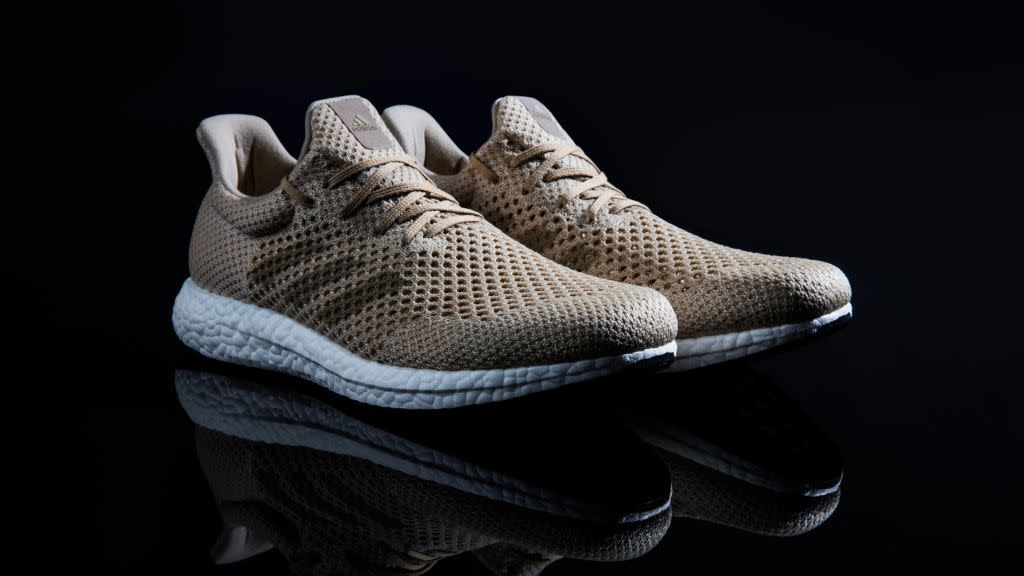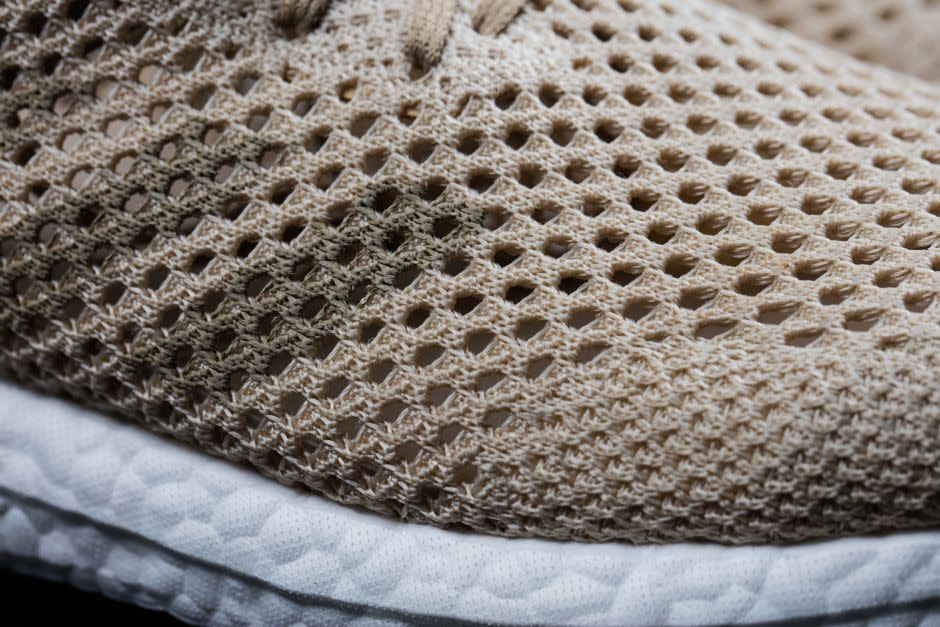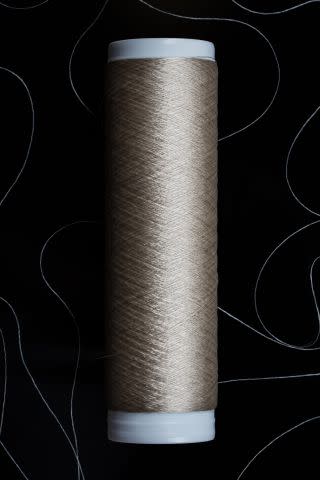Adidas’ new bioengineered sneaker has potential to be as strong as steel, and it’s entirely sustainable

Synthetic spider silk is one of the most exciting new textiles in development.
The attraction is obvious: Natural spider silk itself is light, elastic, and incredibly strong. AMSilk, a German manufacturer of a synthetic silk called Biosteel, estimates a web made of “pencil-thick spider silk fiber can catch a fully loaded Jumbo Jet Boeing 747 with a weight of 380 tons.”
Synthetic versions are getting closer to replicating those properties of the natural stuff. Not only that, they typically start from all-natural raw materials, making them completely biodegradable and a great sustainable alternative to oil-derived synthetics such as nylon and polyester. After years of research, companies are finally producing synthetic silk in quantities large enough that commercial products can put it to use, and among those that see huge potential in the textile is Adidas.
Yesterday, at the Biofabricate summit in New York, the German sportswear maker unveiled its first synthetic-silk concept shoe, the Futurecraft Biofabric. The upper is made entirely from AMSilk’s Biosteel, which Adidas says is 15% lighter than conventional synthetics and has “potential to be the strongest fully natural material available.”

The material itself feels similar to a conventional synthetic, but lighter.
“We’re ready to release something next year,” says James Carnes, Adidas’ vice president of global brand strategy. “It will be small. It will be limited quantities. It will be a higher price because it’s the first time we’re doing it. But we wanted to start the process of scaling up and making it available.”
The rollout will be similar, or possibly even a little faster, than Adidas’ shoes made of reclaimed ocean plastic in partnership with Parley for the Oceans, according to Carnes. This month, 7,000 pairs of that sneaker will finally become available, about a year after the project was first announced, and next year Adidas plans to have one million pairs on the market.
Carnes says they’re planning on using Biosteel for more than just one sneaker design. “It will be multiple shoes at some point,” he says. “It has potential to be engineered for other uses as well.” One might be apparel.

AMSilk spins a good yarn for Adidas.
The raw ingredients AMSilk uses to create its Biosteel textile are natural products, such as beets and sugar cane. The company uses bacteria to ferment the sugars in those ingredients, much like producing alcohol, except in this case, the bacteria spit out raw synthetic silk. It’s then spun it into yarn, which isn’t as strong as natural silk yet, but Jens Klein, AMSilk’s CEO, says they’re constantly working on it, and getting closer.
For Adidas, the sneaker is part of a broader push on sustainability, which also produced the recycled ocean-plastic sneakers. While that project sought to “close the loop”—sustainability-speak for a closed cycle in which what’s already in the world gets used over and over for new products, without virgin resources needing to be used—Carnes hopes this could throw out the loop altogether.
Even recycled plastic is originally derived from oil, which can’t be put back into the planet once taken out. But a synthetic-silk sneaker that’s grown from things like beets could be composted at the end of its life. Carnes says they can also engineer it with “triggers” that would make it biodegrade faster. Parts such as the sole are still made of conventional materials, but Adidas imagines a shoe that might one day be completely biodegradable.
As Adidas and AMSilk reach larger scales, the price of the sneaker, which has yet to be determined, will come down, but for now Klein says the sneaker at least gives consumers the choice to buy a product that’s rethinking sustainability on an entirely new level.

Sign up for the Quartz Daily Brief, our free daily newsletter with the world’s most important and interesting news.
More stories from Quartz:

